Table of Contents
The UNESCO Sites in Mexico have resulted from the recognition of 35 cultural and natural landmarks as UNESCO World Heritage Sites in Mexico and 21 locations on the Mexico UNESCO tentative list. These touristic sites in Mexico are acknowledged for their unique and valuable cultural, natural, artistic, and historical significance and are preserved for future generations.
In addition to these 35 sites on the Mexico UNESCO list, many other places to travel to Mexico are being considered for UNESCO recognition. These sites, listed on the tentative list, showcase the country’s rich cultural heritage and are waiting for approval to join the prestigious and famous World Heritage Sites list.
To help visitors discover these remarkable Mexico tourist attractions, we have created an interactive map of the UNESCO sites in Mexico.
Mexico UNESCO Map
Click markers to show information and photo.
World Heritage Sites in Mexico
UNESCO World Heritage Sites in Mexico
There are 35 UNESCO World Heritage Sites in Mexico. All of these three sites are listed under the Cultural category.
- Agave Landscape and Ancient Industrial Facilities of Tequila
- Aqueduct of Padre Tembleque Hydraulic System
- Archaeological Monuments Zone of Xochicalco
- Archaeological Zone of Paquimé, Casas Grandes
- Camino Real de Tierra Adentro
- Central University City Campus of the Universidad Nacional Autónoma de México (UNAM)
- Earliest 16th-Century Monasteries on the Slopes of Popocatepetl
- El Tajin, Pre-Hispanic City
- Franciscan Missions in the Sierra Gorda of Querétaro
- Historic Centre of Mexico City and Xochimilco
- Historic Centre of Morelia
- Historic Centre of Oaxaca and Archaeological Site of Monte Albán
- Historic Centre of Puebla
- Historic Centre of Zacatecas
- Historic Fortified Town of Campeche
- Historic Monuments Zone of Querétaro
- Historic Monuments Zone of Tlacotalpan
- Historic Town of Guanajuato and Adjacent Mines
- Hospicio Cabañas, Guadalajara
- Luis Barragán House and Studio
- Pre-Hispanic City and National Park of Palenque
- Pre-Hispanic City of Chichen-Itza
- Pre-Hispanic City of Teotihuacan
- Pre-Hispanic Town of Uxmal
- Prehistoric Caves of Yagul and Mitla in the Central Valley of Oaxaca
- Protective town of San Miguel and the Sanctuary of Jesús Nazareno de Atotonilco
- Rock Paintings of the Sierra de San Francisco
- Archipiélago de Revillagigedo
- El Pinacate and Gran Desierto de Altar Biosphere Reserve
- Islands and Protected Areas of the Gulf of California
- Monarch Butterfly Biosphere Reserve
- Sian Ka’an
- Whale Sanctuary of El Vizcaino
- Ancient Maya City and Protected Tropical Forests of Calakmul, Campeche
- Tehuacán-Cuicatlán Valley: originary habitat of Mesoamerica
UNESCO World Heritage Sites in Mexico are protected locations for their cultural and natural importance.
Agave Landscape and Ancient Industrial Facilities of Tequila
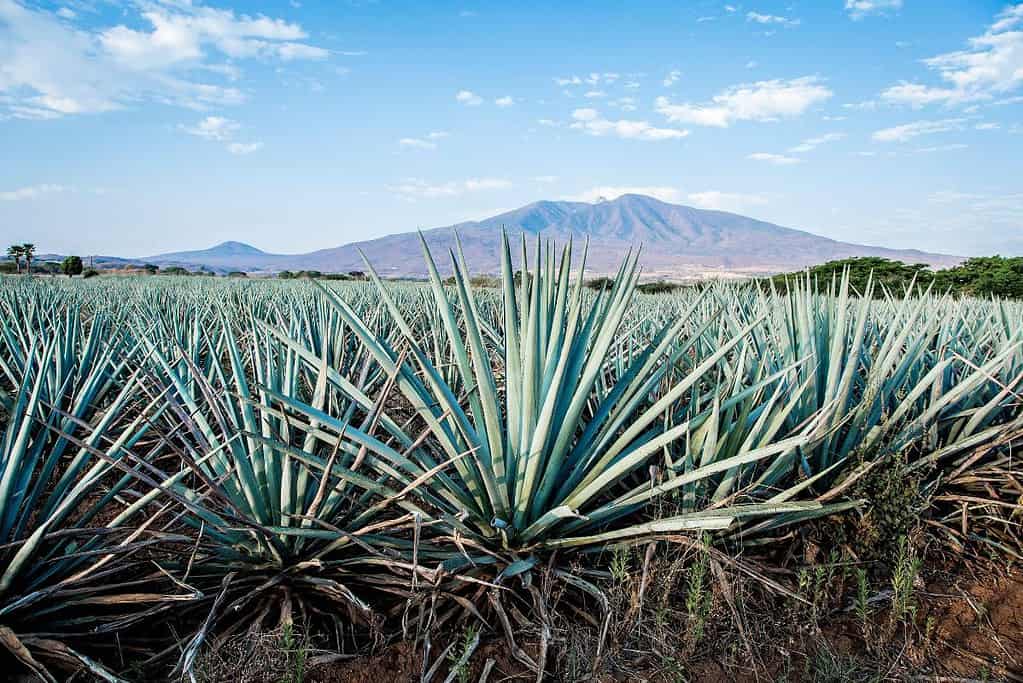
The Agave Landscape and Ancient Industrial Facilities of Tequila is a UNESCO World Heritage Site in Jalisco, Mexico. This site is a unique and well-preserved example of the traditional agricultural and industrial practices used to produce tequila, Mexico’s national drink. The landscape is characterized by the blue agave fields that cover the region, cultivated using traditional techniques passed down for generations. The ancient industrial facilities of this site include distilleries, ovens, and mills that have been used for centuries to produce tequila. These facilities showcase the technological innovations and cultural practices that have shaped the production of this iconic drink and offer a glimpse into Mexico’s rich history and heritage. The Agave Landscape and Ancient Industrial Facilities of Tequila are a must-visit destination for anyone interested in Mexico’s cultural traditions and natural beauty.
Aqueduct of Padre Tembleque Hydraulic System
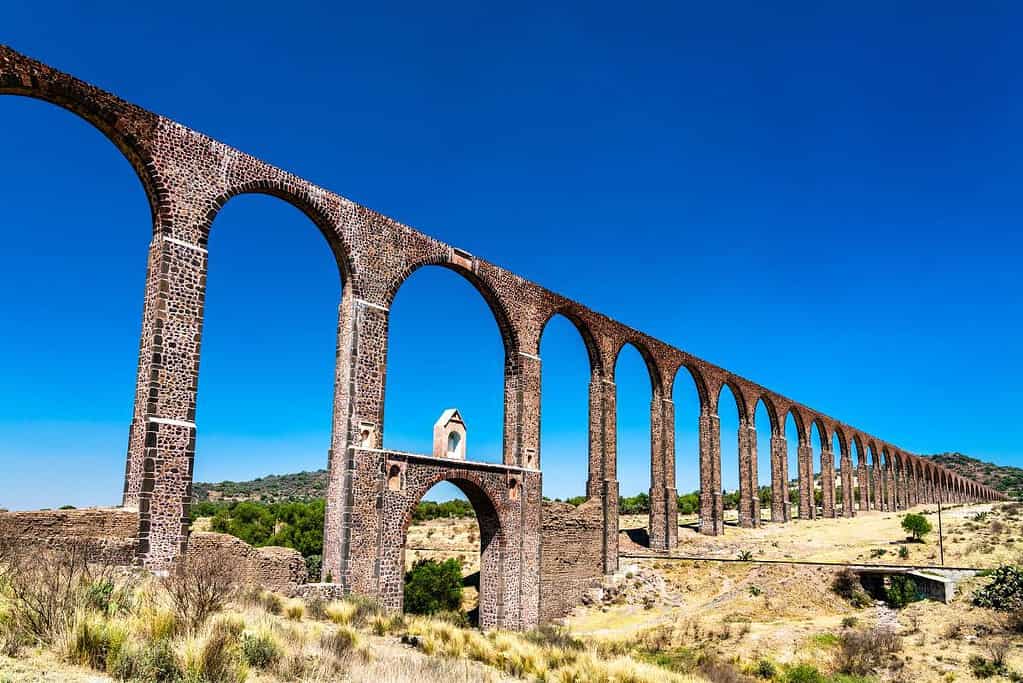
The Aqueduct of Padre Tembleque Hydraulic System is a UNESCO World Heritage Site in Mexico. The aqueduct is a well-preserved example of hydraulic engineering constructed in the 16th century to bring water to the Otomi people in the central highlands of Mexico. The system features a series of arches, tunnels, and canals that extend for over 48 kilometers, showcasing the ingenuity and technical expertise of the engineers who built it. The aqueduct is an important reminder of the cultural exchange between the Spanish colonizers and the indigenous people of Mexico during the colonial period, and it remains an impressive feat of engineering to this day.
Archaeological Monuments Zone of Xochicalco
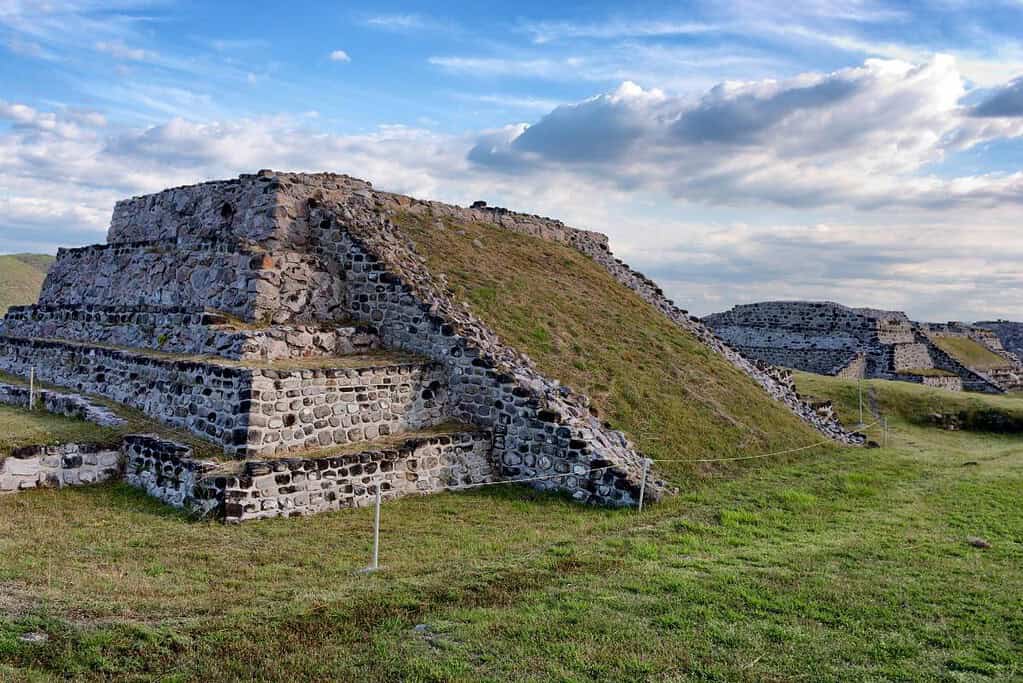
The Archaeological Monuments Zone of Xochicalco is a UNESCO World Heritage site in Morelos, Mexico. This ancient city was built by the Mayan people between the 7th and 10th centuries CE and is home to many well-preserved structures, including pyramids, temples, and ball courts. The city was an important center of trade, art, and religion, and the buildings and artwork found at Xochicalco showcase the Mayan people’s unique cultural and artistic contributions. The site is also notable for its impressive astronomical observatory, which was used to track the movements of the sun and moon. The Archaeological Monuments Zone of Xochicalco is a must-visit destination for anyone interested in Mayan history and architecture.
Archaeological Zone of Paquimé, Casas Grandes
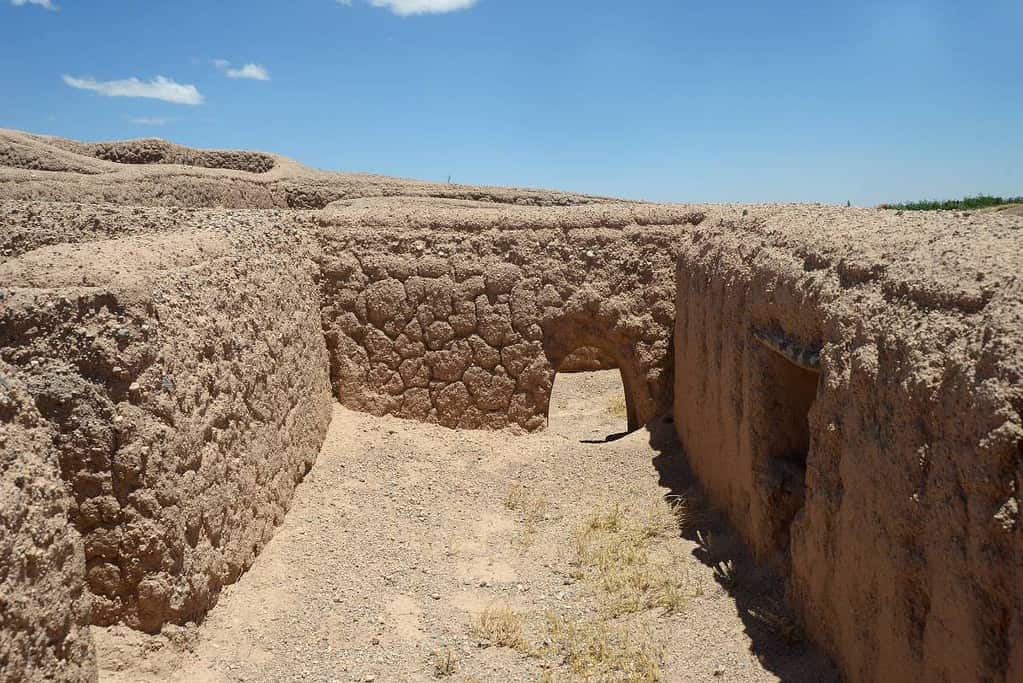
The Archaeological Zone of Paquimé, Casas Grandes is a UNESCO World Heritage Site in northern Chihuahua, Mexico. It is the site of an ancient pre-Columbian settlement that flourished between the 11th and 14th centuries CE. The site features several well-preserved adobe and stone structures, including multi-story buildings, ballcourts, and a circular ceremonial center. The site is also home to many artifacts, including pottery, textiles, and metalwork, that provide insight into the daily life, culture, and trade of the Paquimé people. The Archaeological Zone of Paquimé, Casas Grandes is a fascinating destination for anyone interested in ancient history and the indigenous cultures of Mexico.
Camino Real de Tierra Adentro
Camino Real de Tierra Adentro is a UNESCO World Heritage site in Mexico. It is a network of roads that dates back to the 16th century and served as a vital transportation route for people and goods between Mexico City and the northern frontier. The roads span over 2,500 kilometers and are lined with historic landmarks, including churches, haciendas, and bridges, that showcase the cultural and architectural contributions of indigenous peoples, Spanish colonizers, and other groups. The Camino Real de Tierra Adentro is a fascinating destination for history buffs and anyone interested in exploring Mexico’s rich cultural heritage.
Central University City Campus of the Universidad Nacional Autónoma de México (UNAM)
The Central University City Campus of the Universidad Nacional Autónoma de México (UNAM) is a UNESCO World Heritage site located in Mexico City, Mexico. It is an outstanding example of modernist architecture and urban planning, designed by renowned Mexican architects in the mid-20th century. The campus is home to several iconic buildings, including the Library, the Rectory Tower, and the Central Auditorium, which blend modernist and traditional Mexican styles. The campus also features extensive green spaces and outdoor sculptures, making it a unique and beautiful example of modernist urban design. The Central University City Campus of the Universidad Nacional Autónoma de México (UNAM) is a must-visit destination for architecture and history enthusiasts visiting Mexico City.
Earliest 16th-Century Monasteries on the Slopes of Popocatepetl
This UNESCO World Heritage Site is located in central Mexico and consists of 14 monasteries built in the 16th century by Spanish monks. The monasteries were constructed on the slopes of the Popocatepetl volcano and represent a unique blend of European and Mesoamerican architectural styles. The monasteries served as centers of evangelization and education for the indigenous population, and they are decorated with elaborate frescoes, sculptures, and other artwork. The monasteries are considered one of the most important examples of colonial architecture in Mexico, offering a glimpse into the country’s rich cultural history.
El Tajin, Pre-Hispanic City
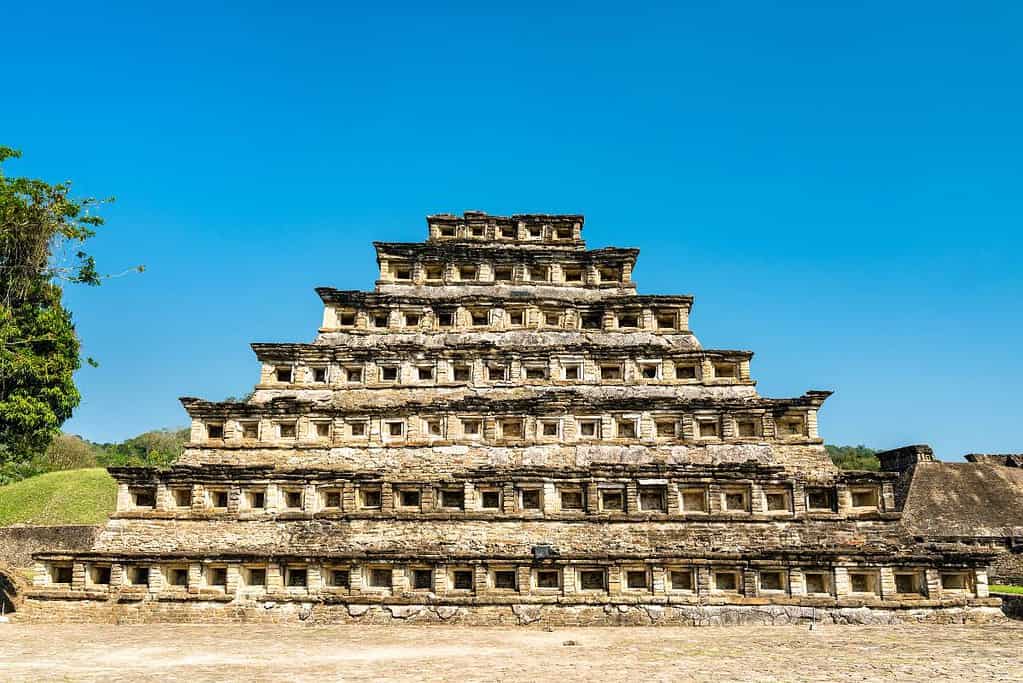
El Tajin, Pre-Hispanic City is a UNESCO World Heritage Site in Veracruz, Mexico. The ancient city was a center of the Totonac culture and is home to a complex of well-preserved structures showcasing the pre-Hispanic era’s architectural and artistic achievements. The site features a unique fusion of indigenous and Mesoamerican influences and is renowned for its impressive pyramids, ball courts, and other ceremonial structures. El Tajin, Pre-Hispanic City is a must-visit destination for anyone interested in Mexican history and culture.
Franciscan Missions in the Sierra Gorda of Querétaro
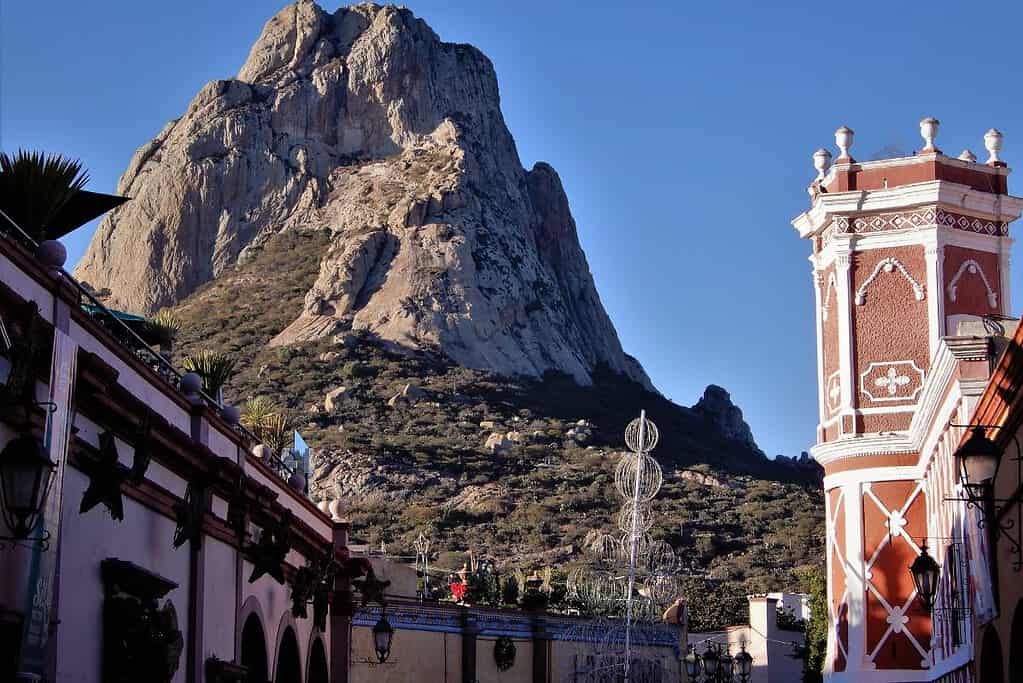
The Franciscan Missions in the Sierra Gorda of Querétaro is a UNESCO World Heritage Site located in central Mexico’s Sierra Gorda mountain range. The missions were built by the Franciscan missionaries in the 18th century and are known for their unique blend of European and indigenous architecture and art. The missions are in remote and rugged landscapes, adding to their beauty and significance. The missions include five religious complexes: Santiago de Querétaro, Jalpan, Tancoyol, Concá, and Landa. The complex includes stunning baroque churches, convents, and other structures that reflect the cultural and religious history of the region.
Historic Centre of Mexico City and Xochimilco
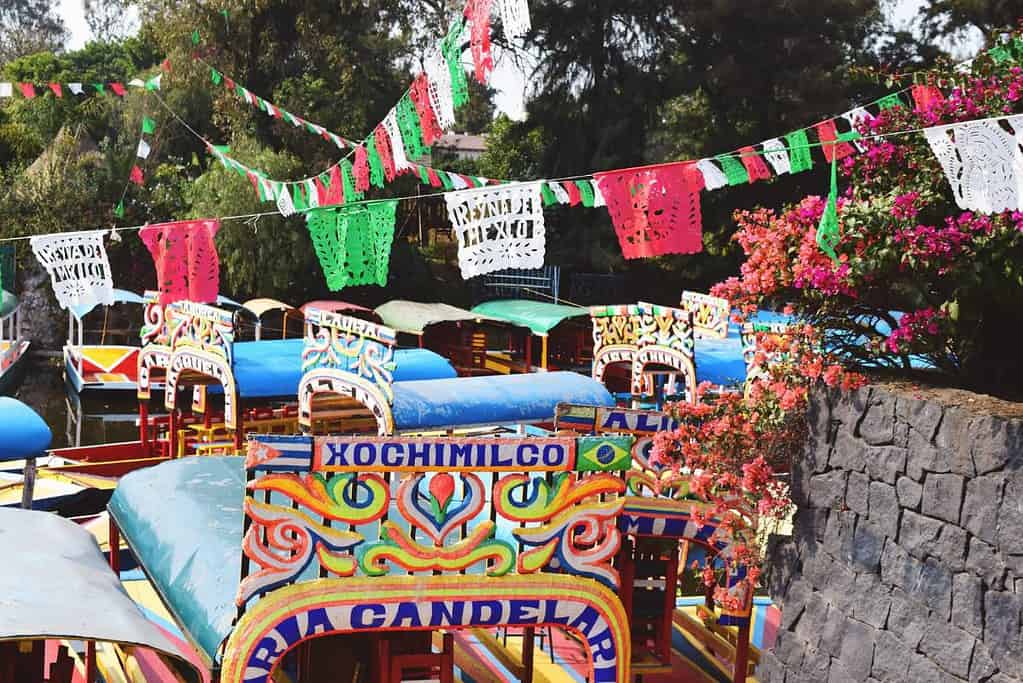
The Historic Centre of Mexico City and Xochimilco is a UNESCO World Heritage Site located in the capital city of Mexico. The site is a well-preserved example of the city’s history and cultural heritage, dating back to the Aztec era. The site features stunning colonial-era buildings and landmarks, including the Metropolitan Cathedral and the National Palace, as well as pre-Hispanic archaeological sites, such as the Templo Mayor. Xochimilco, a historic canal network and agricultural area, is also part of the site, providing a unique glimpse into the region’s history and traditional way of life. The Historic Centre of Mexico City and Xochimilco is a must-visit destination for anyone interested in Mexico’s rich cultural heritage and history.
Historic Centre of Morelia
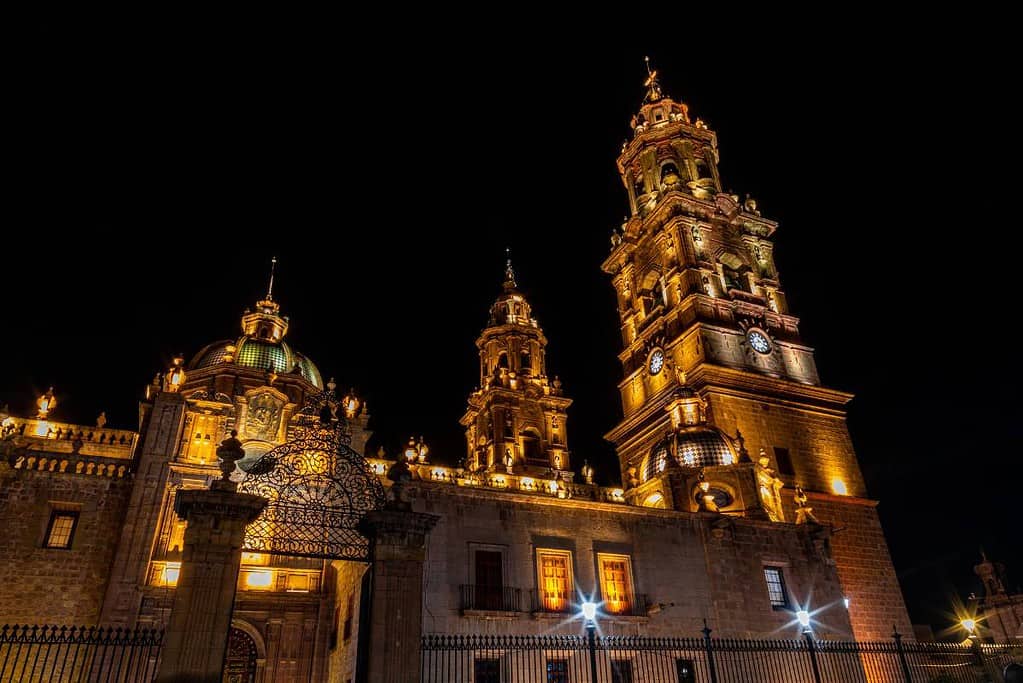
The Historic Centre of Morelia is a UNESCO World Heritage site located in the capital of Michoacán state in Mexico. The site features well-preserved colonial architecture from the 16th century that reflects the Spanish Baroque style. The Historic Centre of Morelia is home to over 200 historic buildings, including the Cathedral of Morelia, built between 1640 and 1744 and considered one of the finest examples of Baroque architecture in Mexico. The site also includes the Aqueduct, which dates back to the 18th century and was used to supply the city with water. The Historic Centre of Morelia is a beautiful and fascinating place for anyone interested in Mexican history and architecture.
Historic Centre of Oaxaca and Archaeological Site of Monte Albán
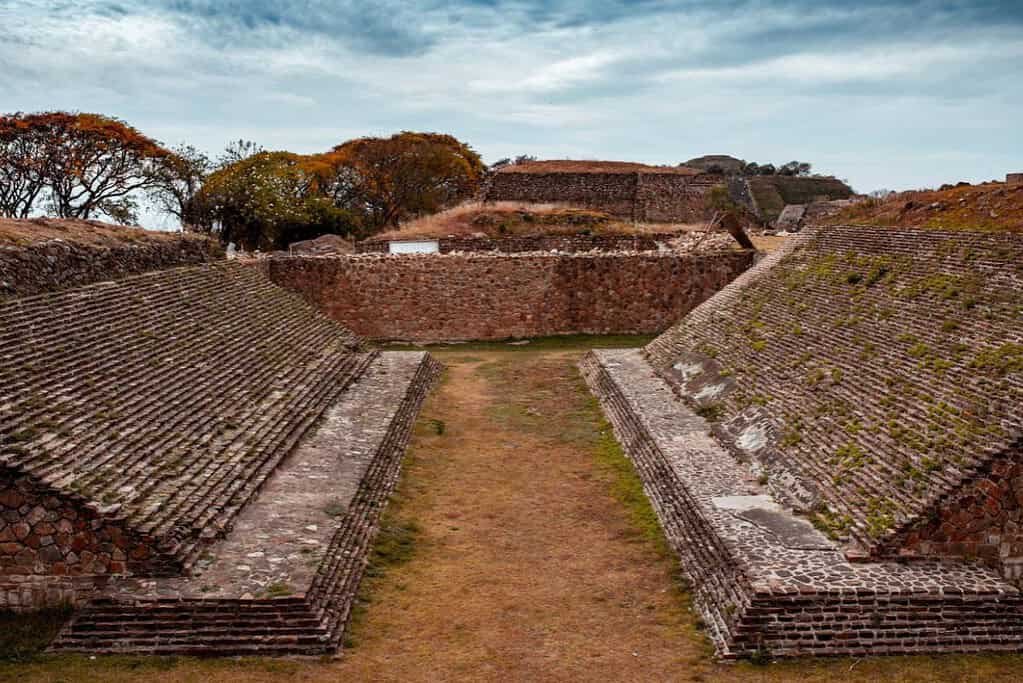
The Historic Centre of Oaxaca and Archaeological Site of Monte Albán is a UNESCO World Heritage site in Oaxaca, Mexico. The site encompasses the historic city center of Oaxaca, which features well-preserved colonial-era buildings and churches, and the ancient Zapotec capital of Monte Albán. The archaeological site of Monte Albán is located on a mountaintop overlooking the city. It features impressive ruins of pyramids, temples, and other structures dating back to the pre-Columbian era. The combination of the historic city center and the ancient ruins of Monte Albán makes this site a must-visit destination for anyone interested in Mexican history and culture.
Historic Centre of Puebla
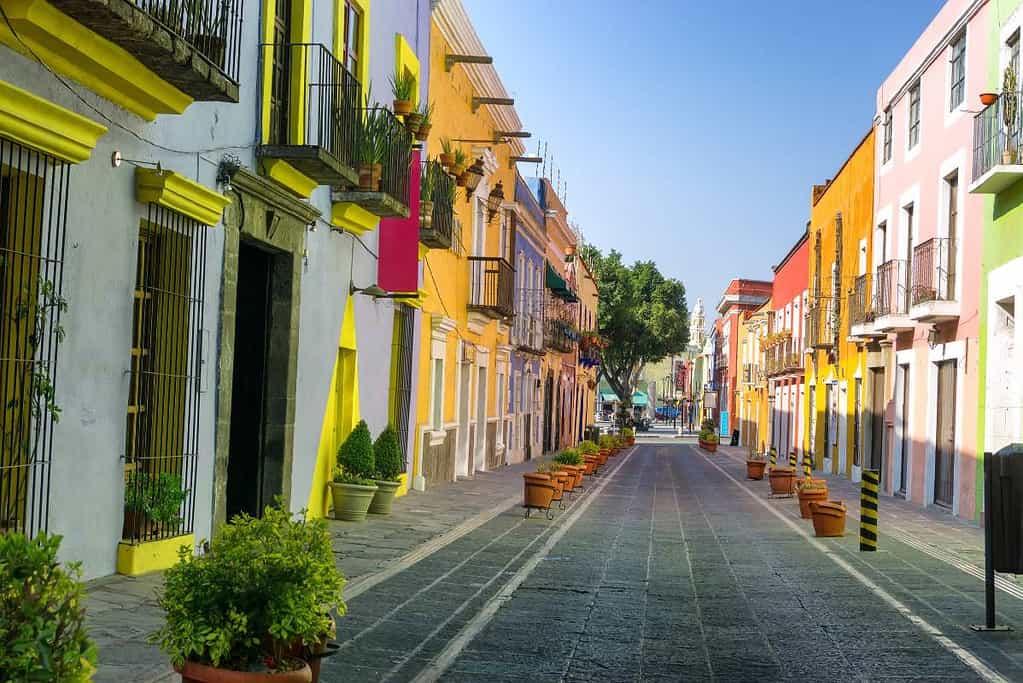
The Historic Centre of Puebla is a UNESCO World Heritage site in Puebla, Mexico. The center features numerous well-preserved colonial buildings, including churches, convents, and homes that date back to the 16th century. The city’s unique architectural style is “Puebla Baroque,” which blends Spanish and indigenous styles. Some of the key landmarks in the center include the Cathedral of Puebla, the Rosario Chapel, and the Palafoxian Library. The Historic Centre of Puebla is a must-visit destination for anyone interested in Mexican colonial architecture and history.
Historic Centre of Zacatecas
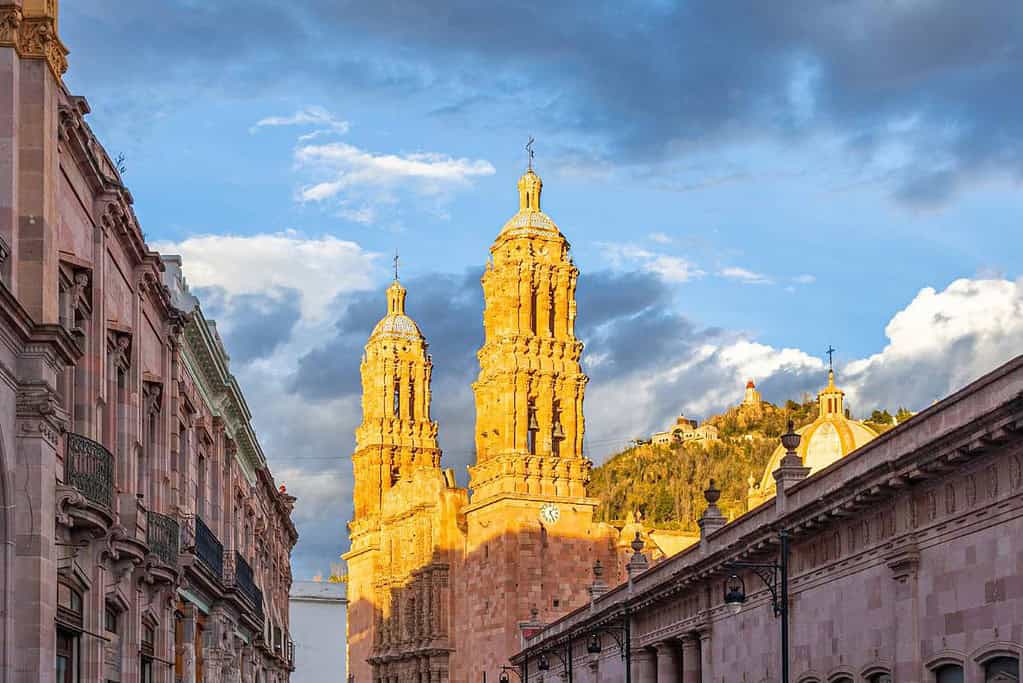
The Historic Centre of Zacatecas is a UNESCO World Heritage site located in Zacatecas, Mexico. The city’s historic center features a remarkable array of Baroque and other colonial-era architecture, including the 18th-century cathedral, the Plaza de Armas, and many other notable landmarks. The city was once a major center of silver mining and played a significant role in the economic and cultural development of the region. Visitors to Zacatecas can explore the city’s rich history and architecture while enjoying its vibrant culture and modern amenities.
Historic Fortified Town of Campeche
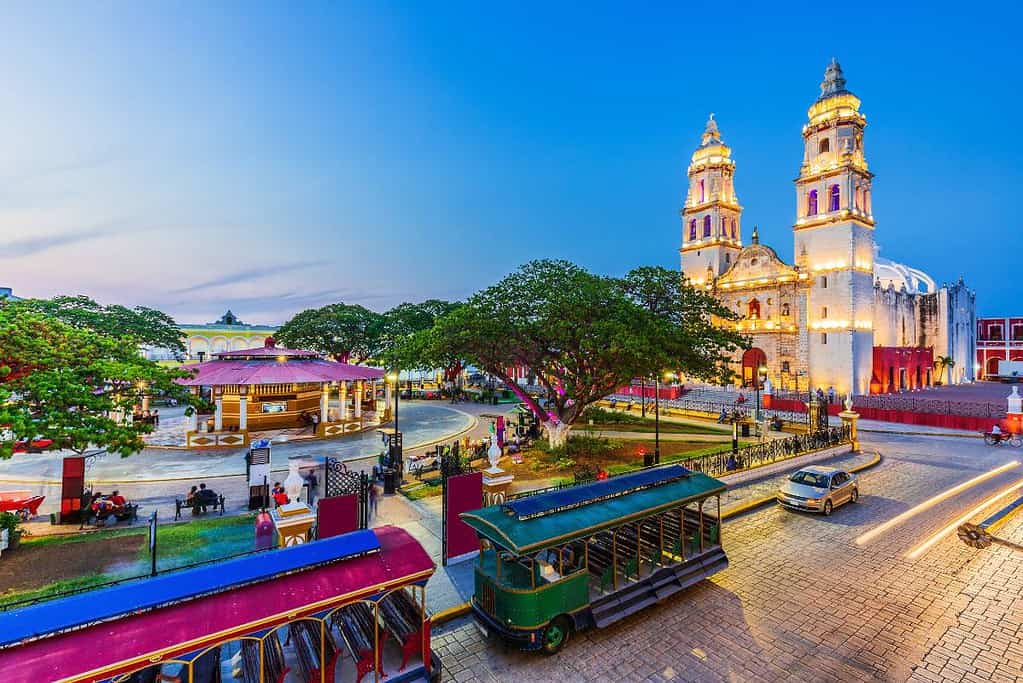
The Historic Fortified Town of Campeche is a UNESCO World Heritage site in Campeche, Mexico. The town features well-preserved ancient walls that once protected it from pirates and other invaders during the colonial period. The walls are a testament to the town’s strategic importance as a port and center of trade during the 16th and 17th centuries. The fortified town has numerous landmarks, including the San Miguel Fort, the San Francisco Church, and the Cathedral of Our Lady of the Immaculate Conception. Visitors can explore the charming streets and plazas of the historic town, admire the colorful colonial architecture, and learn about the rich cultural and historical heritage of Campeche.
Historic Monuments Zone of Querétaro
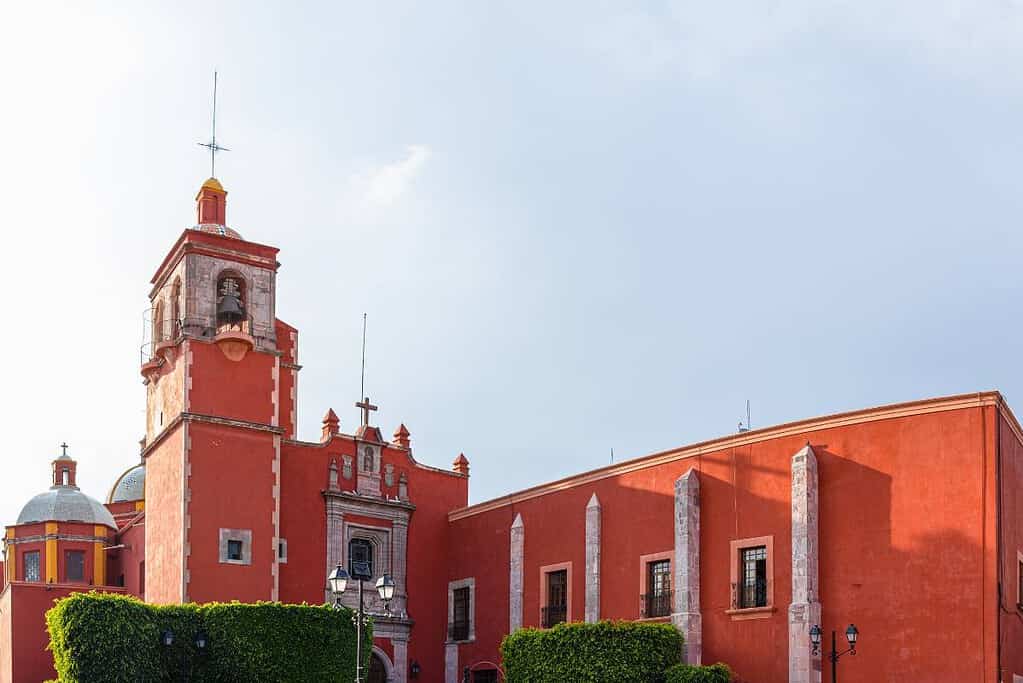
The Historic Monuments Zone of Querétaro is a UNESCO World Heritage site in Querétaro, Mexico. The zone is a well-preserved example of a colonial-era city and is home to numerous historic buildings and landmarks, including churches, plazas, and houses. The zone played a crucial role in Mexico’s struggle for independence and was the site of key events such as the signing of the Declaration of Independence. The city’s architecture reflects a fusion of Spanish and indigenous influences, and the zone provides a unique window into Mexico’s cultural and architectural history. A must-visit destination for anyone interested in history and architecture, the Historic Monuments Zone of Querétaro is a testament to the country’s rich cultural heritage.
Historic Monuments Zone of Tlacotalpan
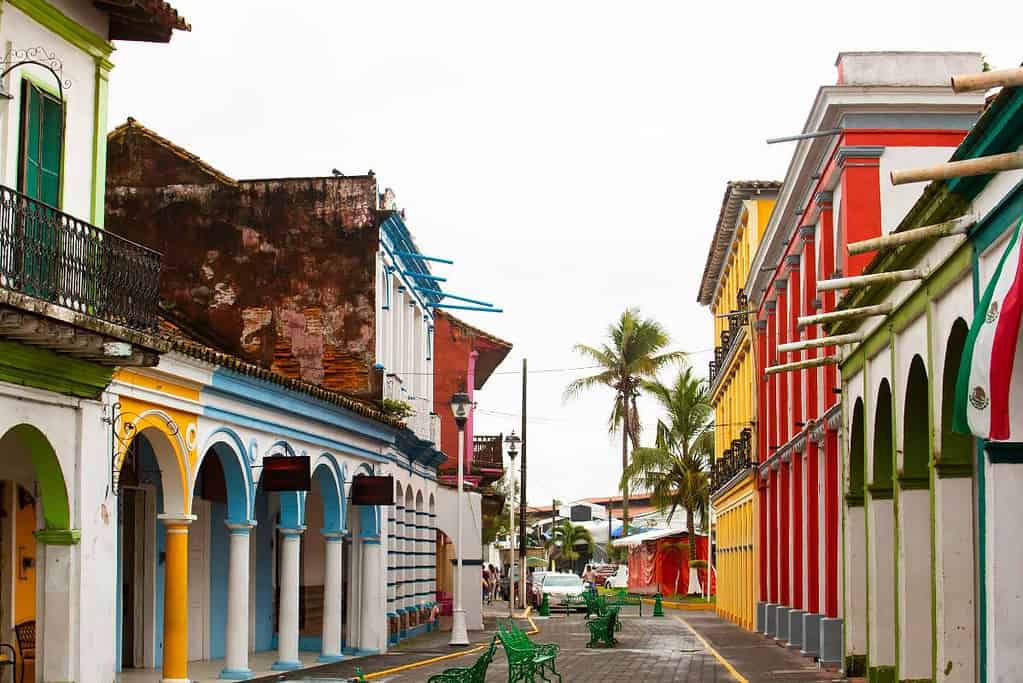
The Historic Monuments Zone of Tlacotalpan is a UNESCO World Heritage Site located in the town of Tlacotalpan in Veracruz, Mexico. The site is home to a collection of well-preserved buildings that showcase the unique fusion of Spanish, Caribbean, and indigenous architectural styles that developed in the region during the 18th and 19th centuries. The buildings include numerous mansions, public buildings, and religious structures notable for their ornate facades, interior decorations, and intricate ironwork. The site is also known for its urban layout, which features a grid of streets and a series of public squares lined with trees and gardens. The Historic Monuments Zone of Tlacotalpan is a testament to the rich cultural heritage of Mexico and a must-visit destination for anyone interested in architecture, history, and urban planning.
Historic Town of Guanajuato and Adjacent Mines
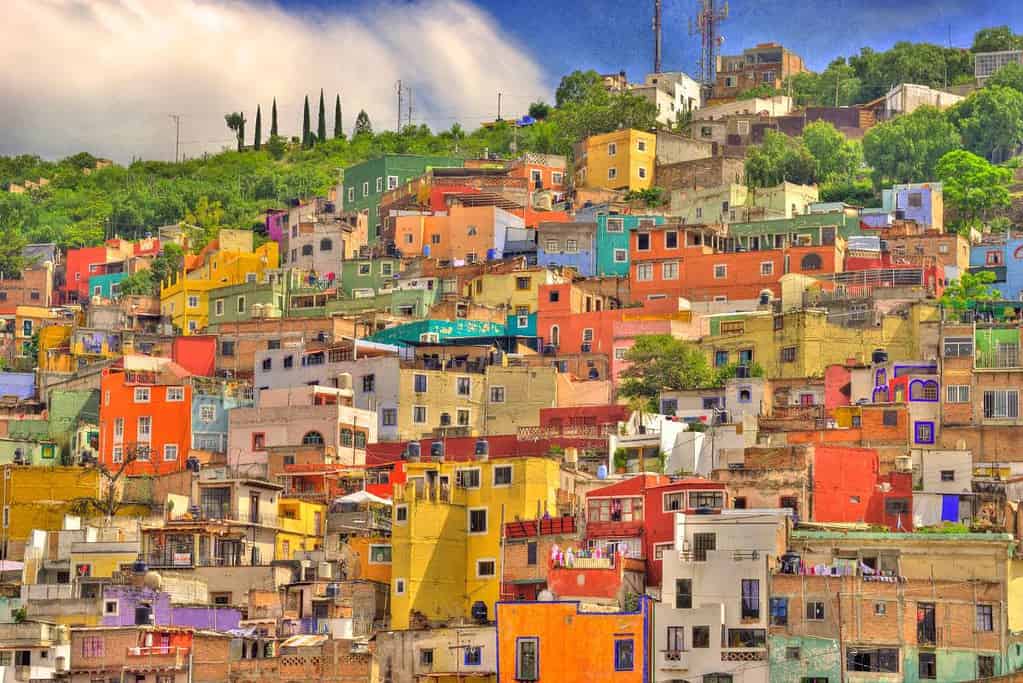
The Historic Town of Guanajuato and Adjacent Mines is a UNESCO World Heritage site in Guanajuato in Mexico. The town was founded in the 16th century during the silver mining boom and is characterized by its colonial architecture, narrow streets, and vibrant colors. The town’s adjacent mines were once the world’s leading source of silver and have been in operation since the 16th century. Visitors can explore the town’s numerous historic landmarks, such as the iconic Teatro Juarez, Our Lady of Guanajuato Basilica, and the Alhondiga de Granaditas. The town is also home to many cultural festivals and events throughout the year, including the International Cervantino Festival, one of the largest cultural festivals in Latin America.
Hospicio Cabañas, Guadalajara
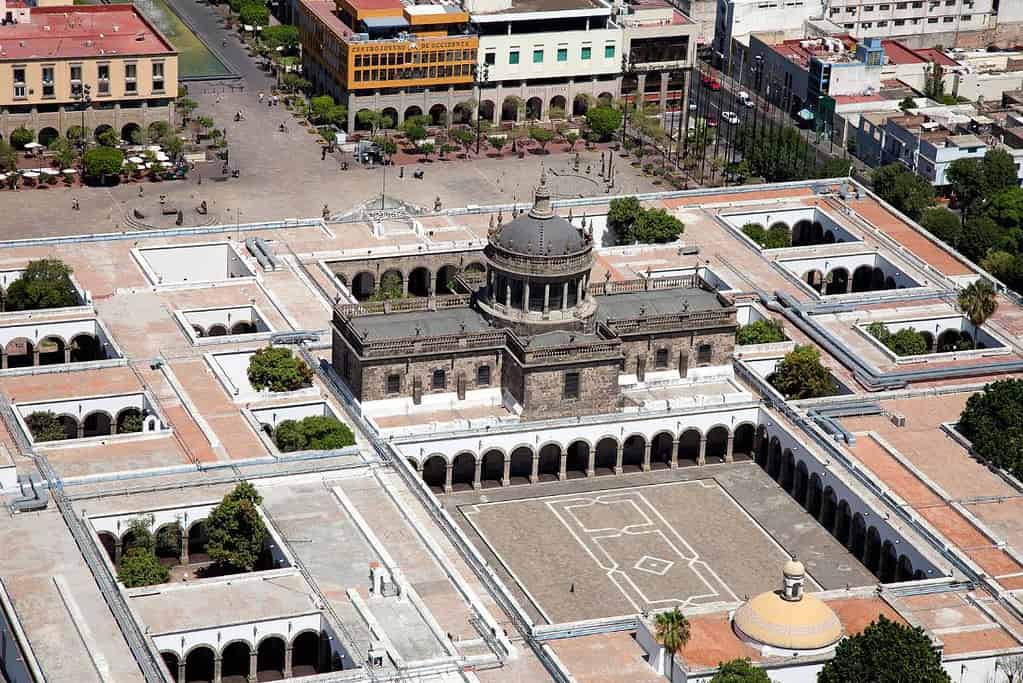
Hospicio Cabañas is a UNESCO World Heritage site located in Guadalajara, Mexico. The site was initially built in the early 19th century as a home for the elderly, the disabled, and orphans. The complex features stunning neoclassical architecture, beautiful courtyards, and numerous murals painted by the renowned Mexican artist José Clemente Orozco. The murals depict scenes from Mexico’s history and culture and are considered some of the country’s finest examples of mural art. Today, Hospicio Cabañas serves as a cultural center and museum, showcasing the art and history of Guadalajara and Mexico.
Luis Barragán House and Studio
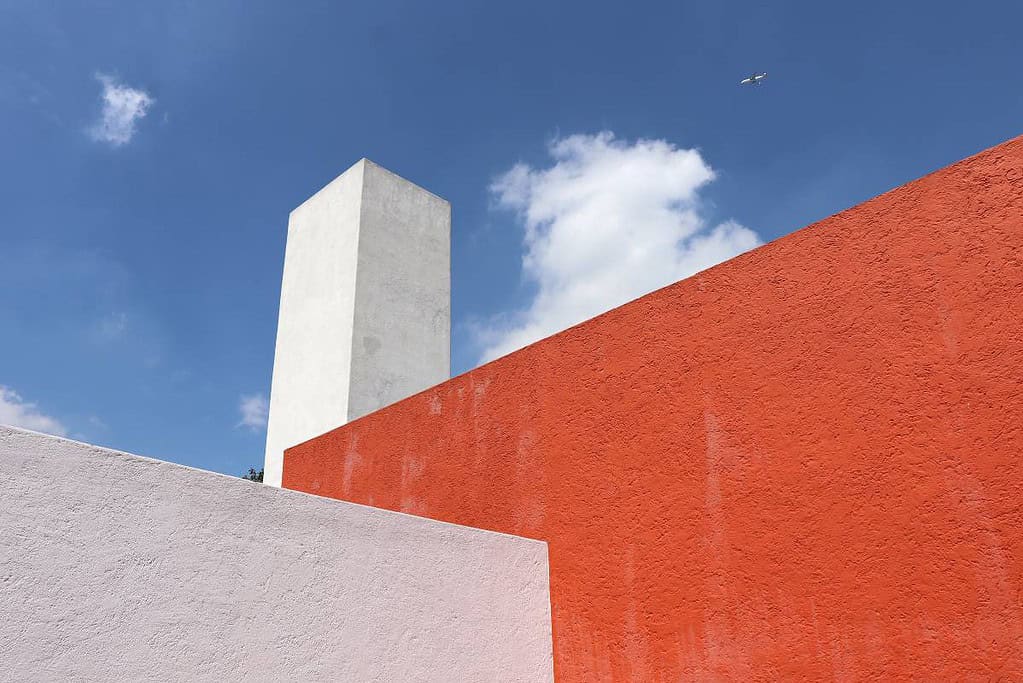
The Luis Barragán House and Studio is a UNESCO World Heritage Site in Mexico City, Mexico. The site is a well-preserved example of the modernist architectural style that emerged in Mexico in the 20th century. The house and studio were designed by the renowned Mexican architect Luis Barragán, showcasing his unique style and approach to modernist design. The site includes the architect’s former residence, known for its bright colors, geometric shapes, and innovative use of space and light. The studio, located adjacent to the residence, features a spacious courtyard and a variety of indoor and outdoor spaces designed to inspire creativity and artistic expression. The Luis Barragán House and Studio is a must-visit destination for anyone interested in modernist architecture and design.
Pre-Hispanic City and National Park of Palenque
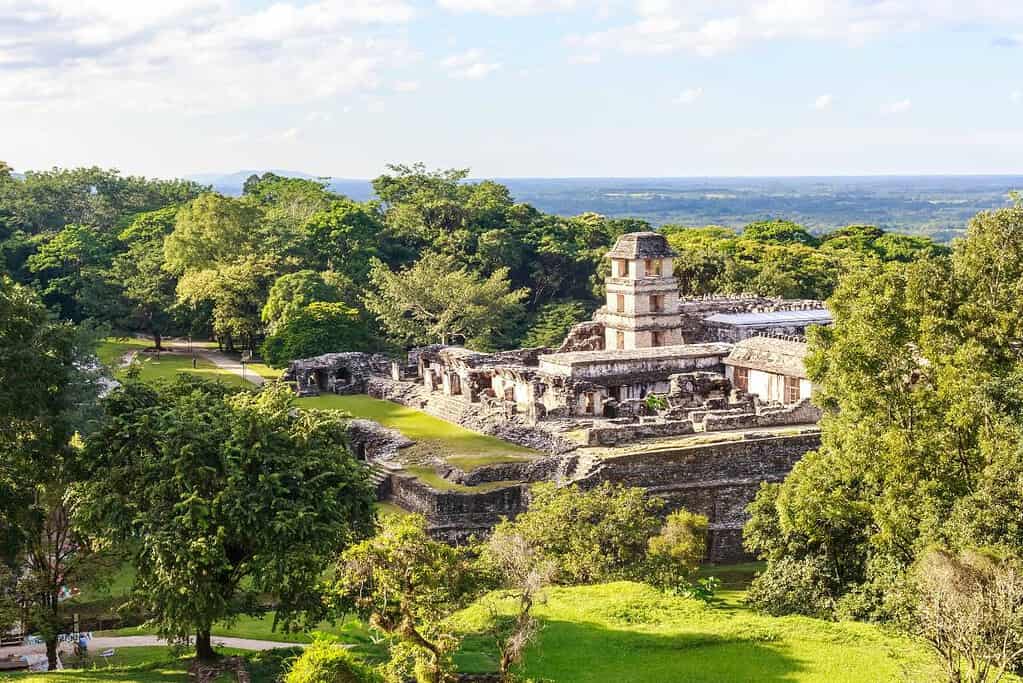
The Pre-Hispanic City and National Park of Palenque is a UNESCO World Heritage site in Chiapas in southern Mexico. The site features a well-preserved ancient Mayan city from the 7th century AD. The city was an important political and cultural center during the Classic period of the Mayan civilization and is home to stunning examples of Mayan architecture and art, including the Temple of the Inscriptions, the Palace, and several other temples and buildings. The site is also located within a lush national park, home to diverse flora and fauna. The Pre-Hispanic City and National Park of Palenque is a must-visit destination for anyone interested in the history and culture of the Mayan civilization.
Pre-Hispanic City of Chichen-Itza
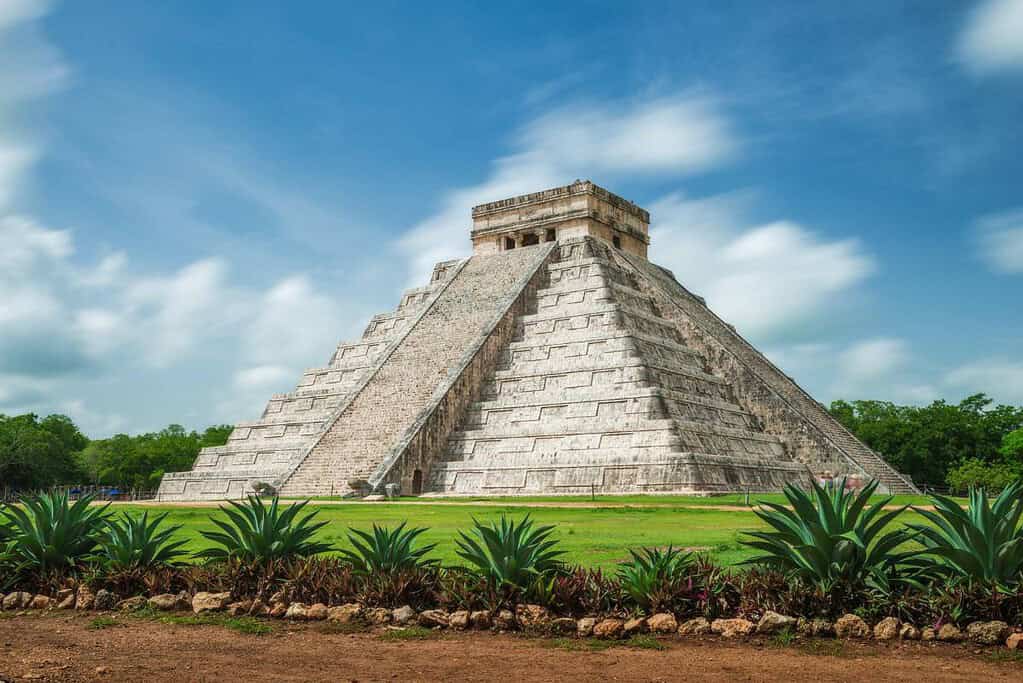
The Pre-Hispanic City of Chichen-Itza is a UNESCO World Heritage site located in the Yucatan Peninsula in Mexico. The city was one of the most important Mayan centers of the Late Classic Period and played a significant role in the development of Mayan civilization. The site features well-preserved ancient structures, including the Temple of Kukulcan, the Great Ball Court, and the Observatory. The city is also home to several cenotes, or natural sinkholes, that were considered sacred by the Mayans and played an important role in their religious practices. The Pre-Hispanic City of Chichen-Itza is a testament to the Mayan people’s sophisticated engineering and architectural skills, and it remains one of the most popular tourist destinations in Mexico.
Pre-Hispanic City of Teotihuacan
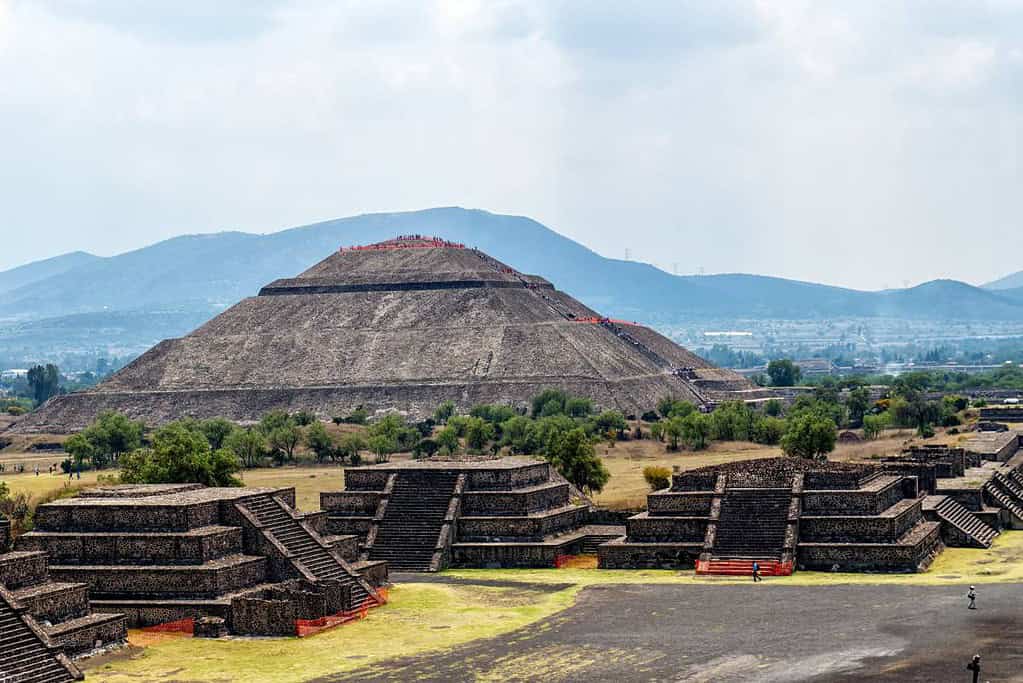
The Pre-Hispanic City of Teotihuacan is a UNESCO World Heritage site located in the Basin of Mexico, near the modern-day city of Mexico City. The site contains some of the most significant Mesoamerican architectural and cultural achievements of pre-Columbian civilizations. The city was once the largest urban center in the pre-Columbian Americas, and the site features many impressive structures, including the Pyramid of the Sun, the Pyramid of the Moon, and the Temple of the Feathered Serpent. The city also contains many well-preserved murals, pottery, and other artifacts that offer a glimpse into the daily life and cultural practices of the ancient Teotihuacanos. The Pre-Hispanic City of Teotihuacan is a must-visit destination for anyone interested in the history and culture of Mexico and Mesoamerica.
Pre-Hispanic Town of Uxmal
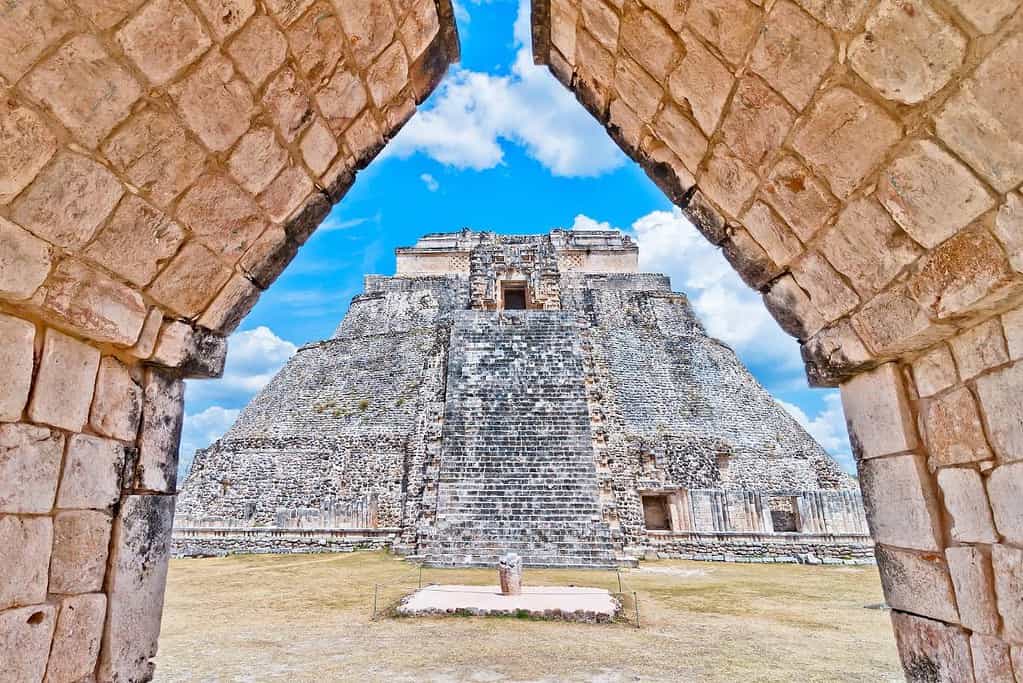
The Pre-Hispanic Town of Uxmal is a UNESCO World Heritage site in Mexico’s Yucatan Peninsula. It is a well-preserved example of Mayan architecture and culture during the Late Classic period (AD 600-900). The town features several impressive structures, including the Pyramid of the Magician, the Nunnery Quadrangle, and the Governor’s Palace. These buildings showcase the Mayan is advanced knowledge of engineering and astronomy and their intricate decorative art. The Pre-Hispanic Town of Uxmal is a fascinating destination for anyone interested in ancient civilizations and their achievements.
Prehistoric Caves of Yagul and Mitla in the Central Valley of Oaxaca
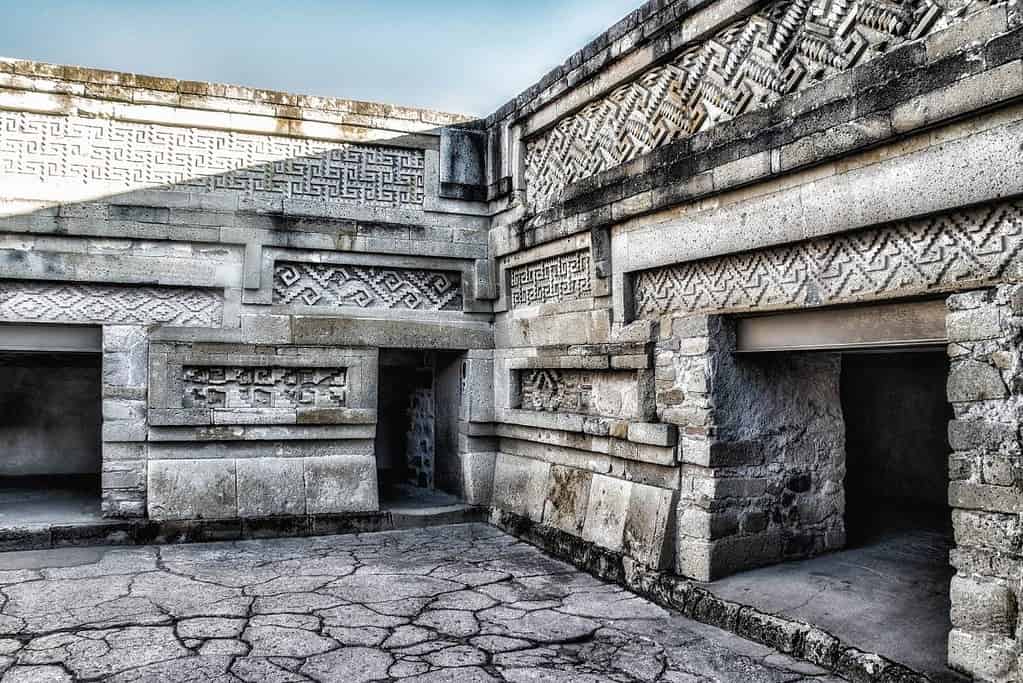
The Prehistoric Caves of Yagul and Mitla in the Central Valley of Oaxaca is a UNESCO World Heritage Site in Oaxaca, Mexico. The site comprises several prehistoric caves humans have inhabited for thousands of years. The caves contain some of the earliest evidence of agriculture in Mesoamerica and evidence of the development of complex societies in the region.
The site is also home to the ruins of several ancient cities, including the Zapotec city of Mitla, a major regional political and religious center. The city’s architecture is known for its intricate stonework and decorative patterns and is considered one of the most important archaeological sites in Mexico.
Protective town of San Miguel and the Sanctuary of Jesús Nazareno de Atotonilco
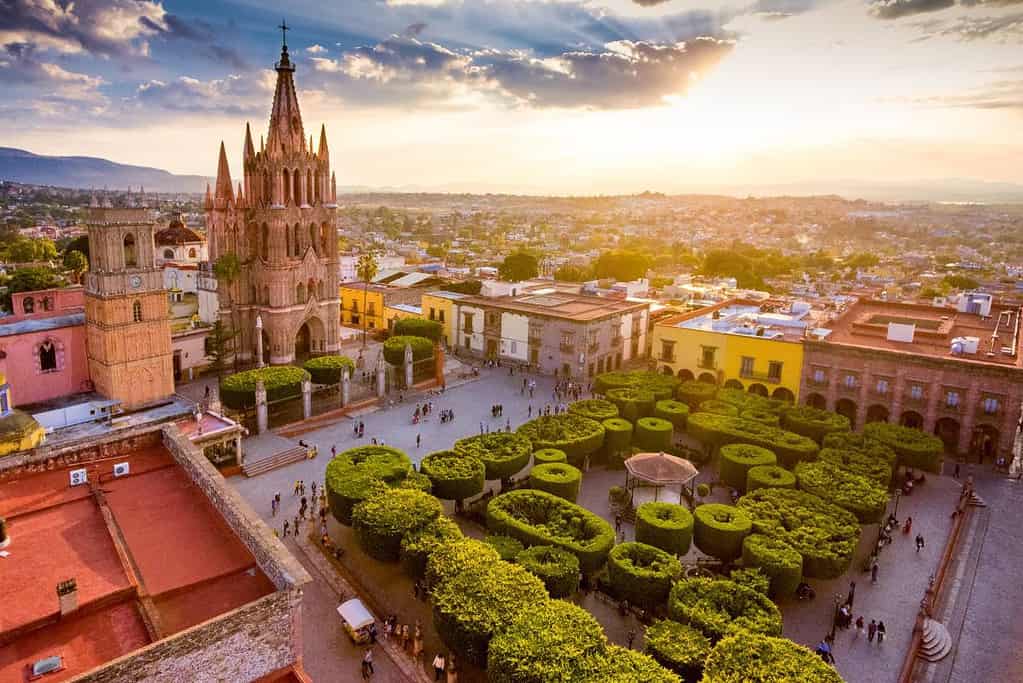
The Protective Town of San Miguel and the Sanctuary of Jesús Nazareno de Atotonilco is a UNESCO World Heritage site in Guanajuato, Mexico. The site is known for its exceptional example of Mexican Baroque architecture and its important role in the country’s history and culture. The town of San Miguel de Allende features well-preserved colonial architecture, including stunning mansions and churches. The Sanctuary of Jesús Nazareno de Atotonilco is a pilgrimage site known for its religious artwork, including murals and sculptures, that showcase the fusion of indigenous and European influences. The Protective Town of San Miguel and the Sanctuary of Jesús Nazareno de Atotonilco provide a unique window into Mexico’s rich cultural and artistic heritage.
Rock Paintings of the Sierra de San Francisco
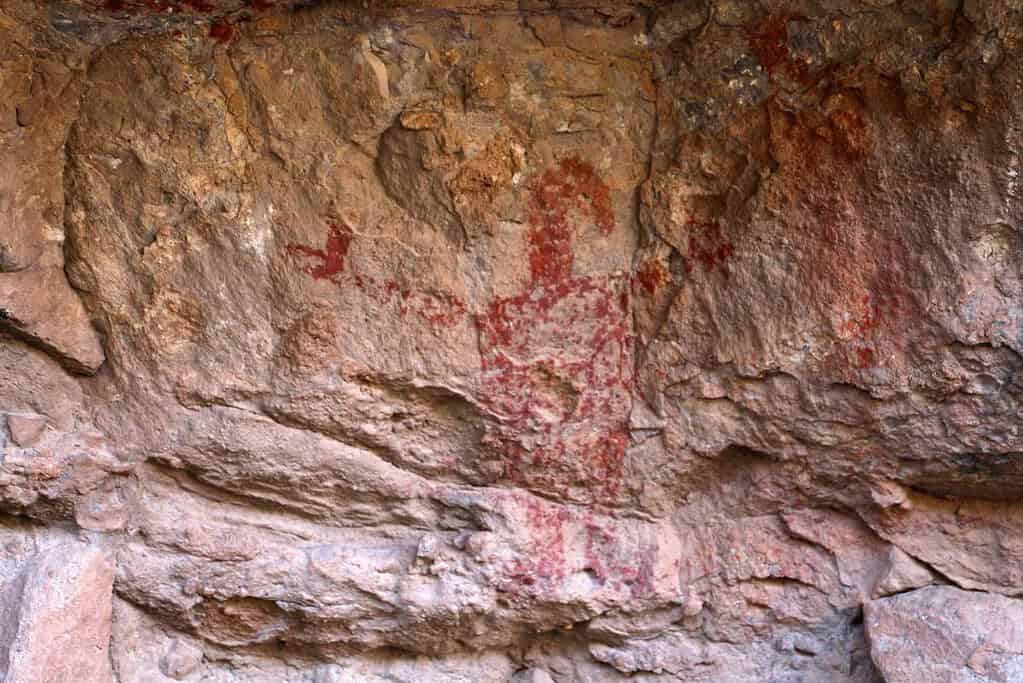
The Rock Paintings of the Sierra de San Francisco is a UNESCO World Heritage site in the Baja California Peninsula in Mexico. The site features well-preserved ancient rock art created by the Cochimi people between 100 BCE and 1300 CE. The paintings are considered some of North America’s finest examples of pre-Columbian rock art and are famous for their intricate details and vibrant colors. The paintings depict a range of subjects, including humans, animals, and mythological figures, and provide valuable insights into the lives and beliefs of the indigenous people who created them. The Rock Paintings of the Sierra de San Francisco is a must-visit destination for anyone interested in ancient art and culture.
Archipiélago de Revillagigedo
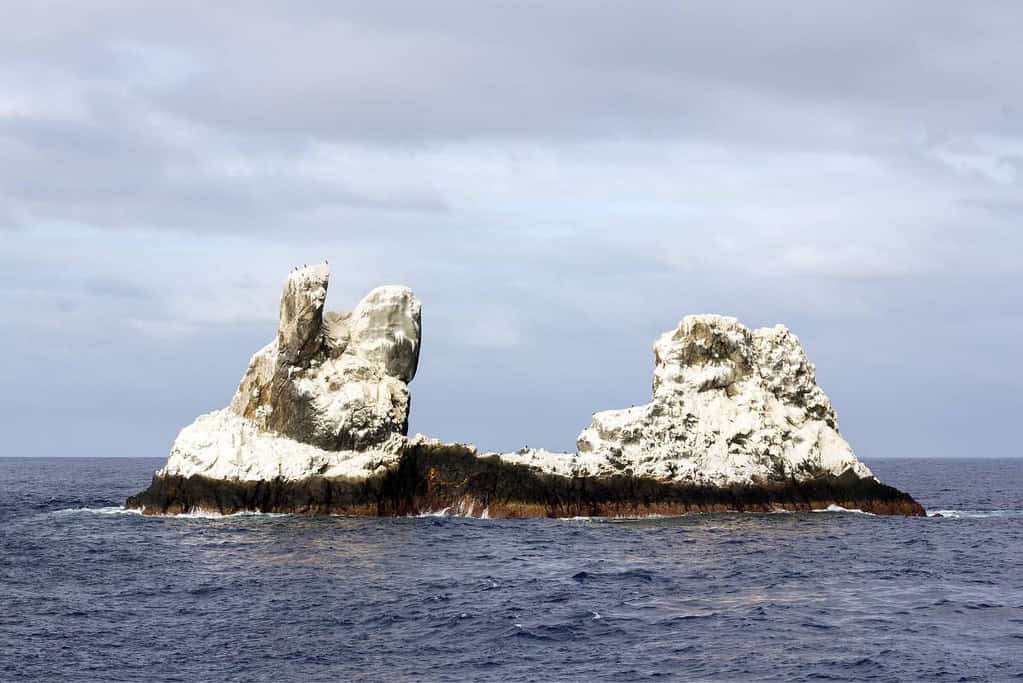
The Archipiélago de Revillagigedo is a UNESCO World Heritage site located off Mexico’s Pacific coast. The archipelago comprises four volcanic islands and their surrounding waters, home to a diverse range of marine life, including several endangered and threatened species. The islands have a unique geological history and offer an opportunity to study the formation and evolution of volcanic islands. The Archipiélago de Revillagigedo is a popular destination for diving and ecotourism and is considered one of the best-preserved marine ecosystems in the world.
El Pinacate and Gran Desierto de Altar Biosphere Reserve
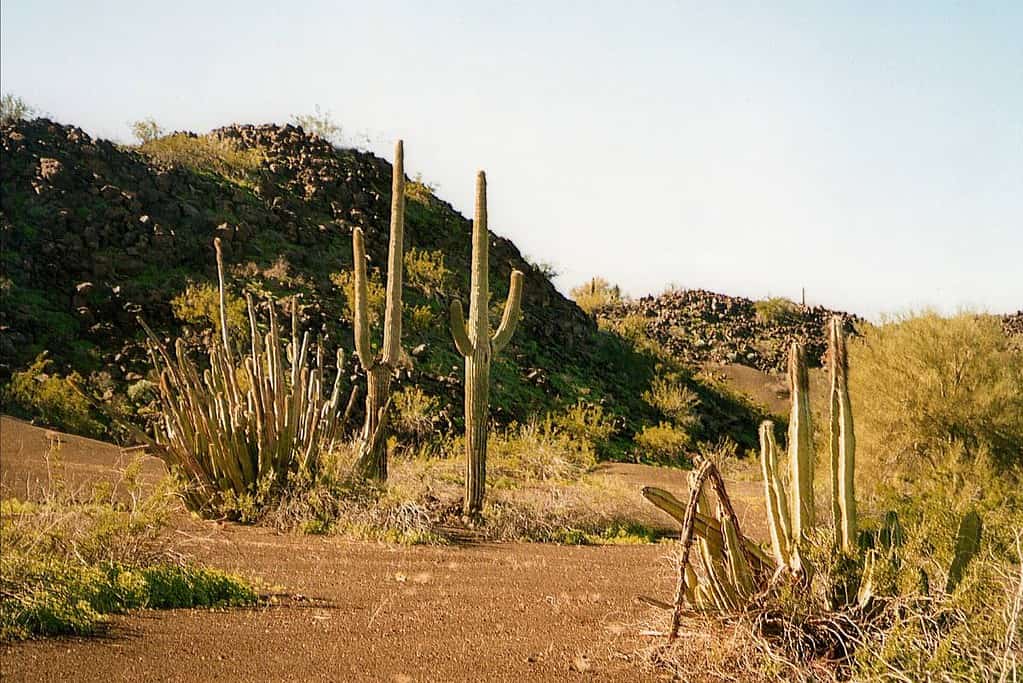
El Pinacate and Gran Desierto de Altar Biosphere Reserve is a UNESCO World Heritage Site in Sonora, Mexico. The biosphere reserve covers an area of 714,566 hectares and is home to a diverse range of flora and fauna, including many endemic species. The reserve also has geological and cultural significance, with unique volcanic landscapes, ancient archaeological sites, and evidence of human migration. Visitors can explore the reserve’s diverse landscapes, including sand dunes, volcanic craters, and rugged mountains, and learn about the region’s rich natural and cultural history.
Islands and Protected Areas of the Gulf of California
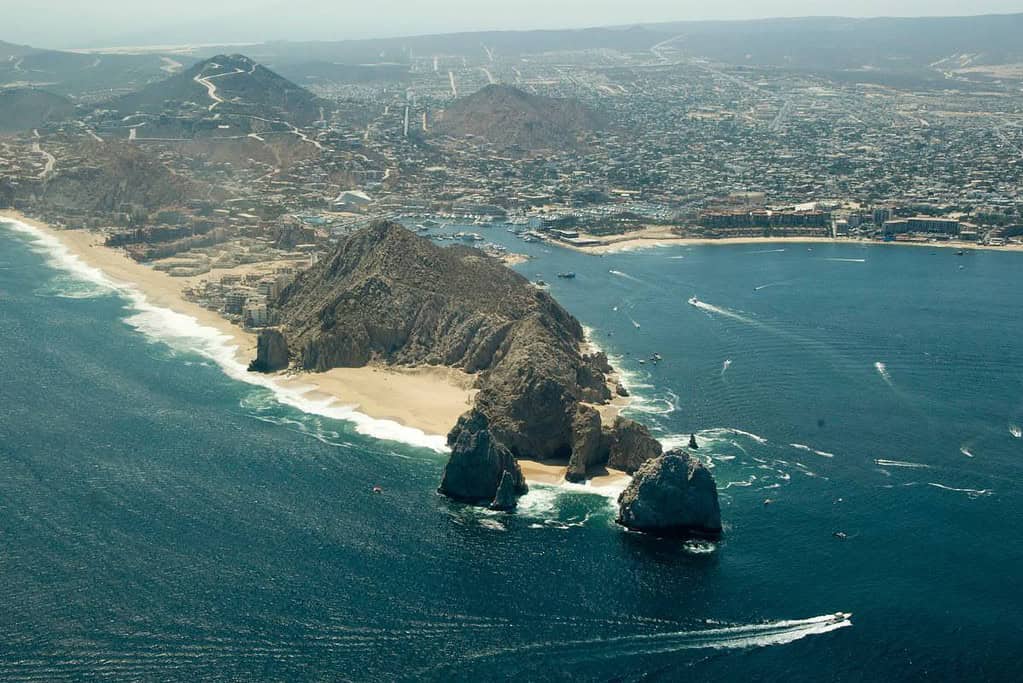
It is a UNESCO World Heritage site located in the Gulf of California in northwestern Mexico. This area is home to a diverse range of marine and terrestrial ecosystems, including over 900 species of fish, whales, dolphins, sea turtles, and numerous other marine mammals. The site also includes several uninhabited islands and coastal areas that are important nesting sites for birds and sea turtles. Visitors to the area can experience the region’s unique natural beauty, and the protection of the site helps to ensure the conservation of these critical ecosystems for future generations.
Monarch Butterfly Biosphere Reserve

Is a UNESCO World Heritage site located in the Mexican states of Michoacán and Mexico. The reserve is a critical habitat for the annual migration of millions of monarch butterflies from Canada and the United States. The monarchs arrive in the reserve each year between November and March, covering an area of about 300 square kilometers of forest. The reserve is essential for the monarchs and the local communities that live in and around the forest. The reserve provides a source of income for the communities through ecotourism and promotes conservation efforts to protect the forest and its inhabitants. The Monarch Butterfly Biosphere Reserve is a must-visit destination for anyone interested in the natural wonders of Mexico.
Sian Ka’an
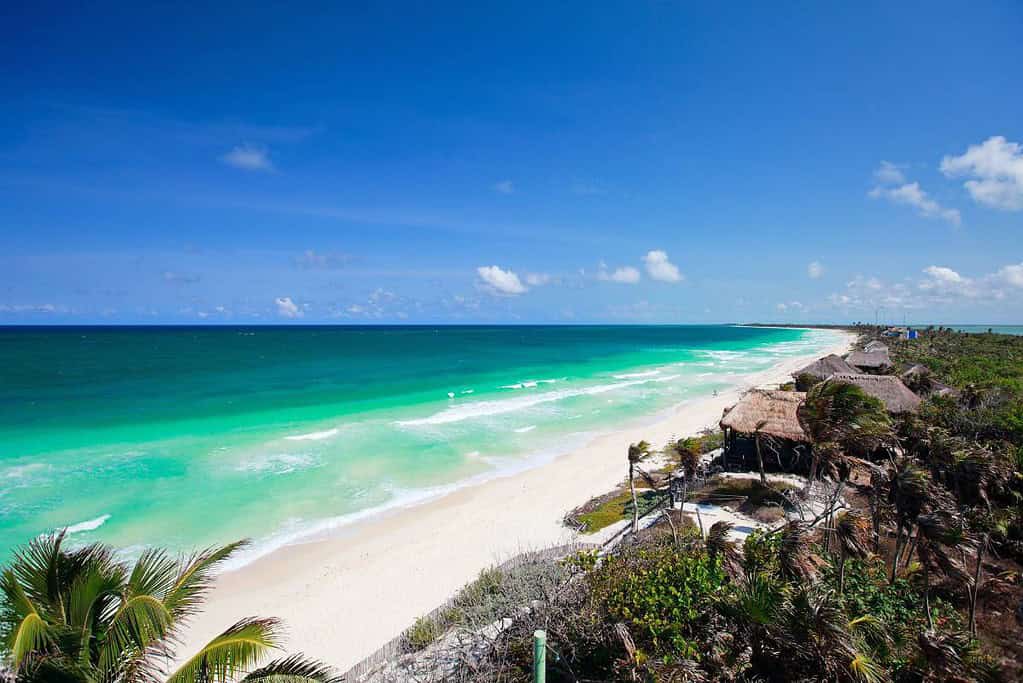
Is a UNESCO World Heritage site on the east coast of Mexico’s Yucatan Peninsula. This biosphere reserve spans over 5,000 square kilometers and is home to diverse ecosystems, including tropical forests, wetlands, and coral reefs. The reserve is home to over 300 bird species and numerous endangered species, such as jaguars, tapirs, and sea turtles. Visitors can explore the reserve by boat, hiking trails, or snorkeling in the clear waters of the Caribbean Sea. Sian Ka’an is a beautiful natural destination and a vital conservation area for protecting Mexico’s unique biodiversity.
Whale Sanctuary of El Vizcaino
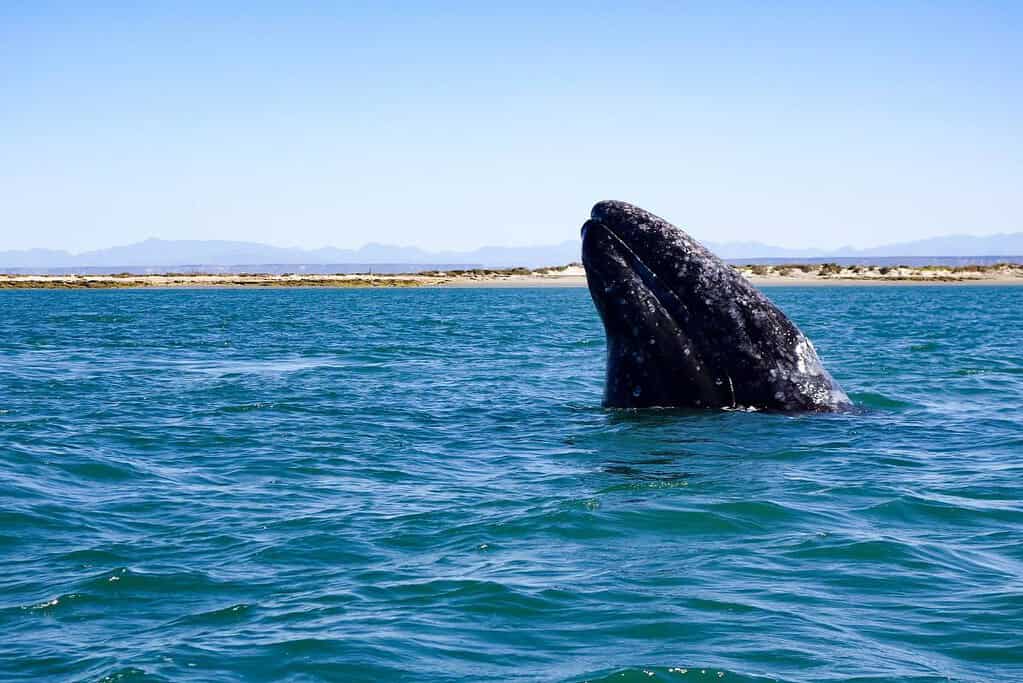
Is a UNESCO World Heritage Site located in Baja California Sur, Mexico. The sanctuary is home to one of the world’s largest gray whale populations, which migrate yearly to breed and give birth. The sanctuary covers over 2,500 square kilometers and includes the lagoons of Ojo de Liebre and San Ignacio and the surrounding desert and coastal areas. Visitors to the sanctuary can take guided tours to see the whales up close and learn about the area’s unique ecosystem. The Whale Sanctuary of El Vizcaino is a must-visit destination for anyone interested in marine wildlife and conservation.
Ancient Maya City and Protected Tropical Forests of Calakmul, Campeche
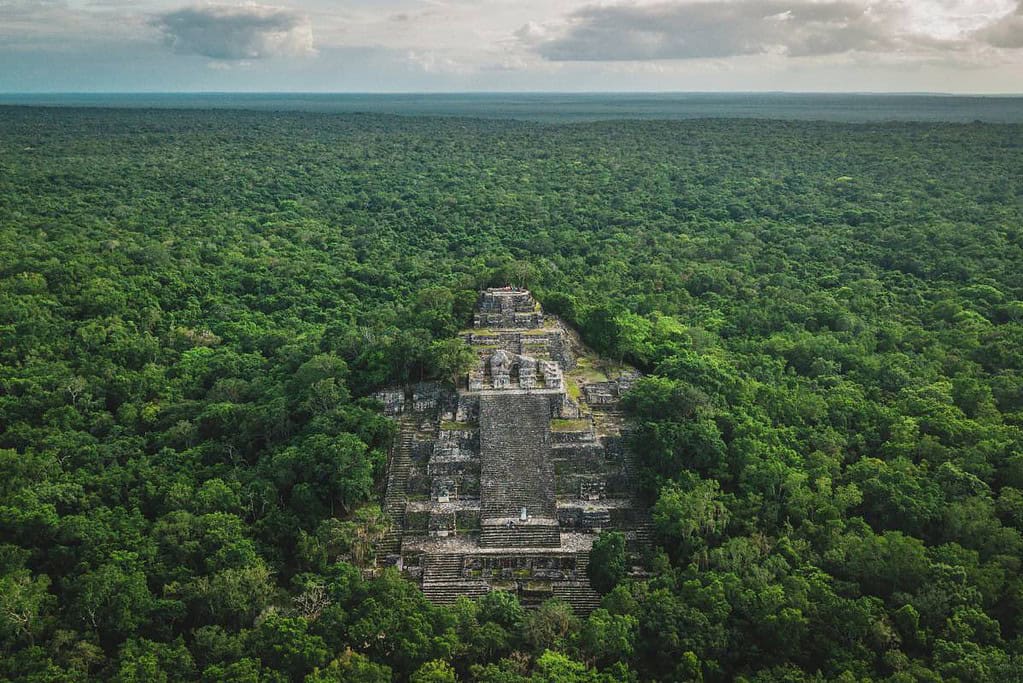
Is a UNESCO World Heritage site in the southern state of Campeche, Mexico. The site comprises the ruins of the ancient Maya city of Calakmul, one of the most influential cities of the Maya civilization during its heyday in the 7th century CE. The city is within a protected tropical forest area home to diverse flora and fauna.
The ancient Maya city of Calakmul features several pyramids, temples, and other well-preserved structures, giving visitors a glimpse into the ancient Maya civilization’s art, architecture, and daily life. The site also includes several causeways and reservoirs, which provide insights into the city’s water management systems.
Tehuacán-Cuicatlán Valley: originary habitat of Mesoamerica
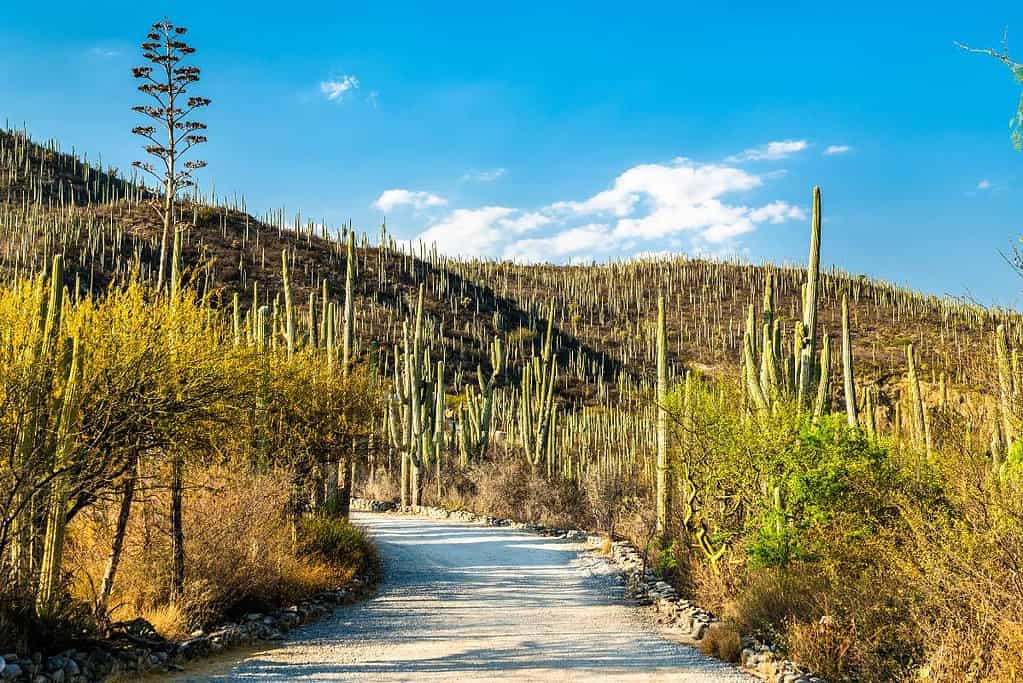
Is a UNESCO World Heritage Site located in the southeastern part of Mexico. The site includes a large area of the Tehuacán-Cuicatlán Valley, home to a diverse range of ecosystems and plant species. The valley is also home to the indigenous communities of the Zapotecs and Mixtecs, who have lived in the region for thousands of years and have developed unique agricultural, culinary, and cultural traditions.
The site is home to over 40 percent of the plant species found in Mexico and is considered one of the world’s most important centers of plant domestication. Humans have also inhabited the area for over 10,000 years, including numerous archaeological sites, cave paintings, and petroglyphs.
Mexico UNESCO tentative list
- Chapultepec Woods, Hill and Castle
- Historic Town of Alamos
- Church of Santa Prisca and its Surroundings
- Pre-Hispanic City of Cantona
- Great City of Chicomostoc-La Quemada
- Historic Town of San Sebastián del Oeste
- Diego Rivera and Frida Kahlo’s Home-Study Museum
- Vallée des Cierges
- Aire de protection de la flore et de la faune Cuatrociénegas
- Historical Town The Royal of the Eleven Thousand Virgins of Cosala in Sinaloa
- Huichol Route through the sacred sites to Huiricuta (Tatehuari Huajuye)
- Région Lacan-Tún – Usumacinta
- Réserve de la Biosphère Banco Chinchorro
- Tecoaque
- Cuetzalan and its Historical, Cultural and Natural Surrounding
- The historical city of Izamal (Izamal, Mayan continuity in a Historical City)
- Los Petenes-Ría Celestún
- Las Pozas, Xilitla
- El Arco del Tiempo del Río La Venta
- Ring of cenotes of Chicxulub Crater, Yucatan
- Las Labradas, Sinalao archaeological site
Tours in Mexico
Our choices of tours in Mexico are divided into thematic features such as Mexico City, Oaxaca, and the Cancun and the Riviera Maya Experience.
